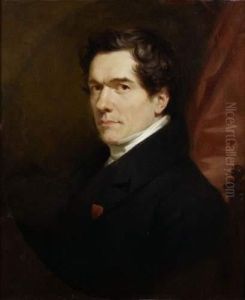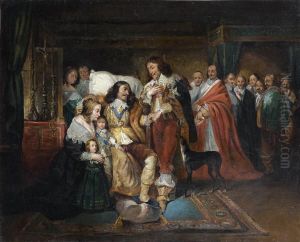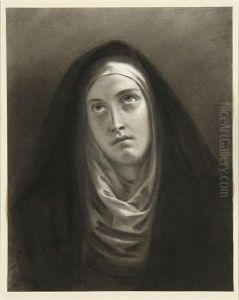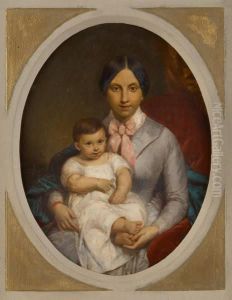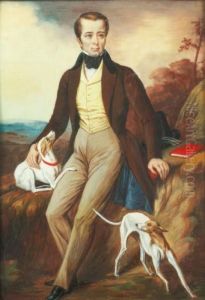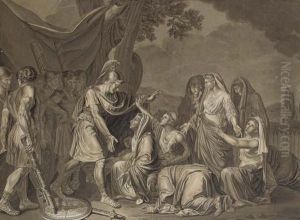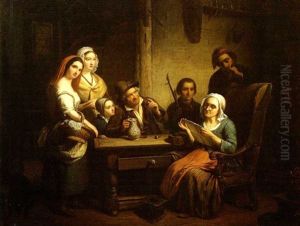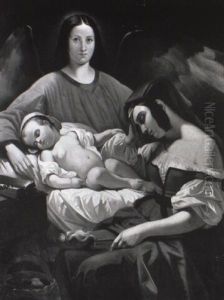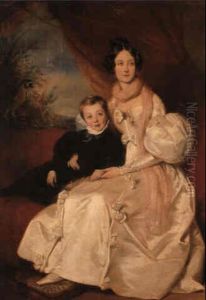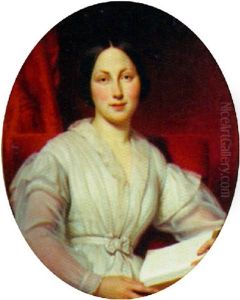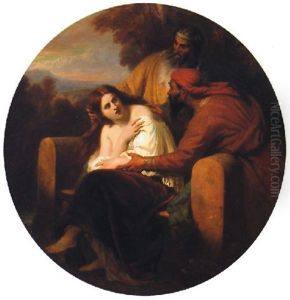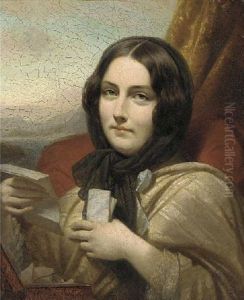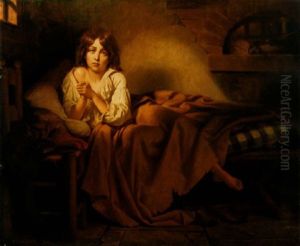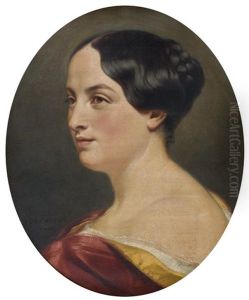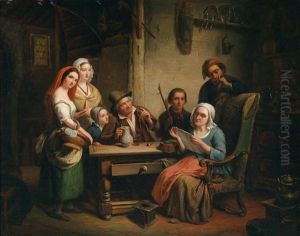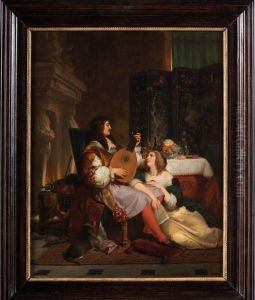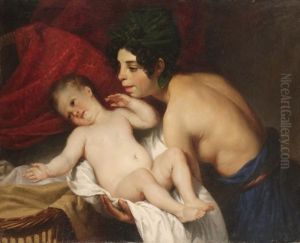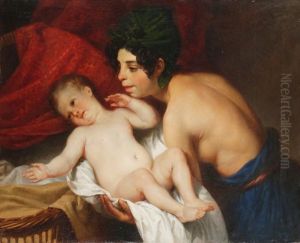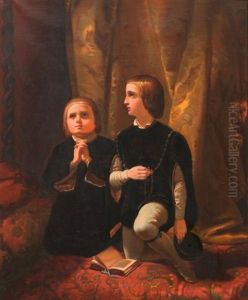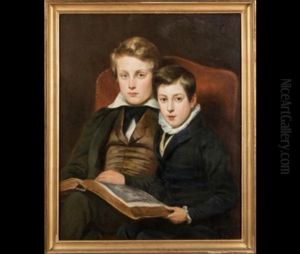Henri De Caisne Paintings
Henri De Caisne was a Belgian artist born on January 27, 1799, in Brussels. He was primarily known for his work as a painter. Caisne's early life was spent in an era following the turmoil of the French Revolution and the subsequent European changes that influenced the art and culture of his time. He was a part of the Romantic movement that swept through Europe in the late 18th and early 19th centuries, a movement that emphasized emotion, individualism, and a love of nature.
Caisne was trained in the fine arts at the Academy of Fine Arts in Brussels where he honed his skills under the guidance of notable teachers. His work was characterized by a strong use of color and a focus on historical and mythological themes, which were popular among Romantic artists. He was also influenced by Neoclassicism, as evidenced in his attention to form and clear lines, a reflection of the art movement that dominated Europe before the rise of Romanticism.
During his career, Caisne exhibited his work in various salons and received recognition for his artistic contributions. His paintings were known for their dramatic flair and the emotional intensity he could evoke through his brushwork and color palette. Despite being less known today, during his lifetime, Caisne was a respected figure in the Belgian art scene.
Henri De Caisne's artistic production included both oil paintings and watercolors. His subjects often revolved around historical events, allegorical scenes, and portraits. He was part of the larger European artistic community that sought to express a sense of nationalism and historical consciousness through art.
Caisne's life came to an end on March 8, 1852, in Paris, France. Although he left behind a body of work that was appreciated in his time, his legacy has been somewhat overshadowed by other artists of the Romantic era. Nonetheless, his contributions to Belgian art are recognized by historians, and his works are still studied for their representation of Romantic ideals and techniques.
